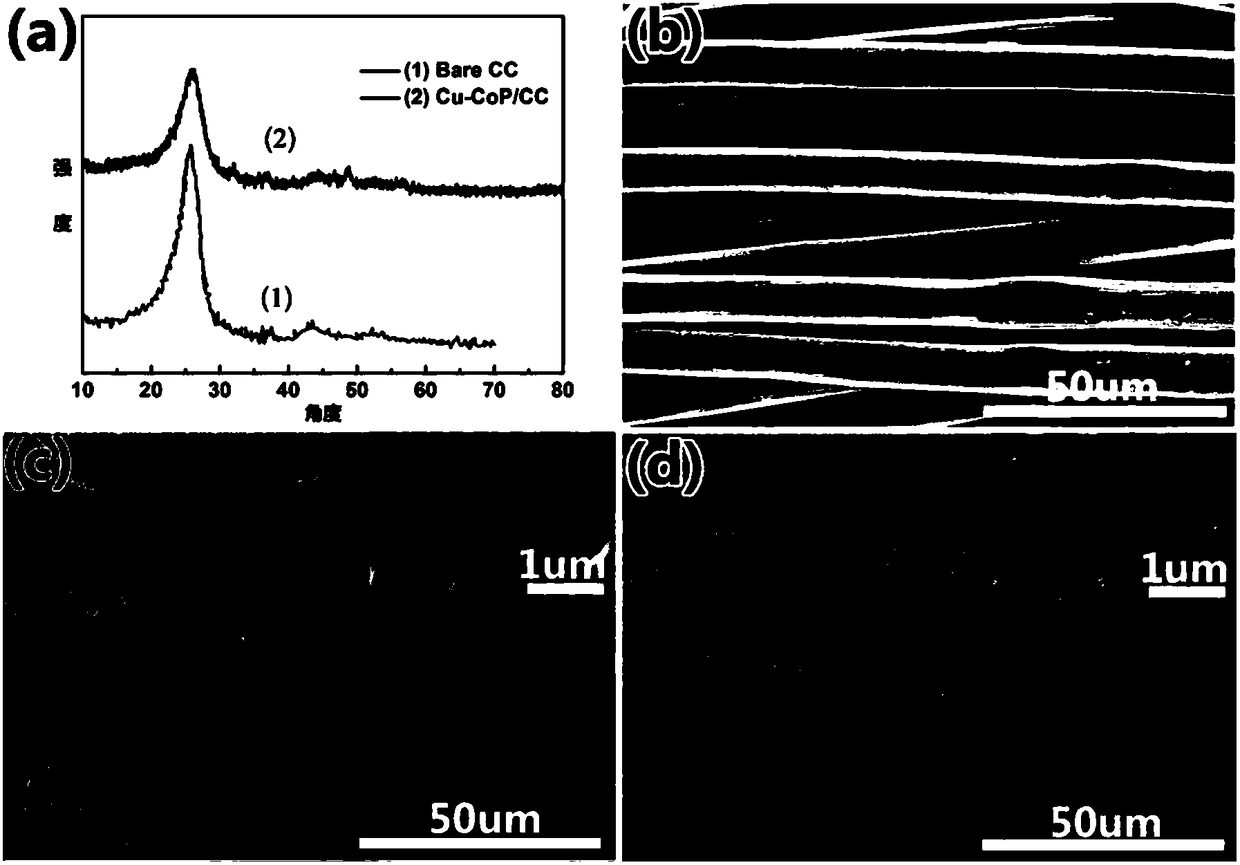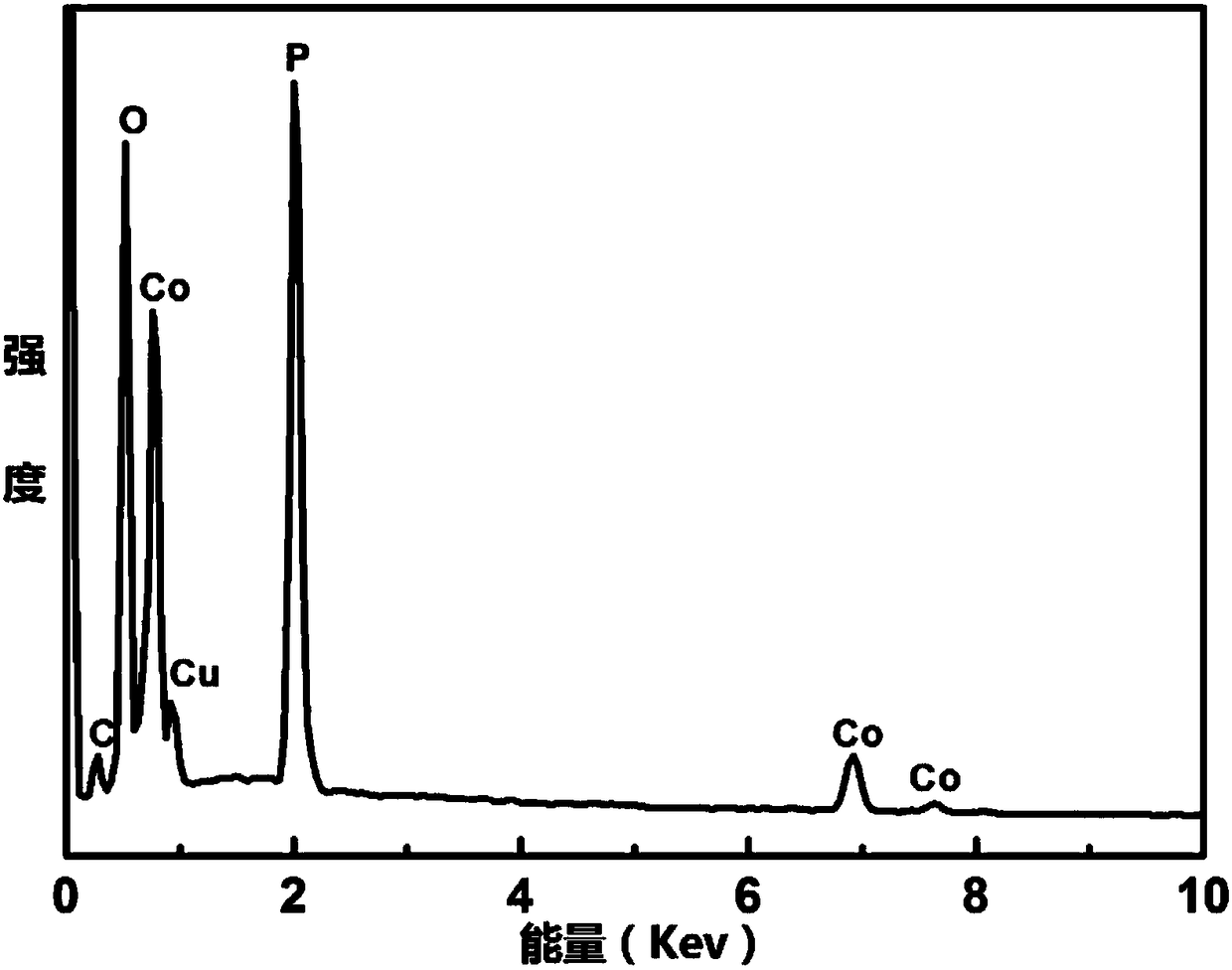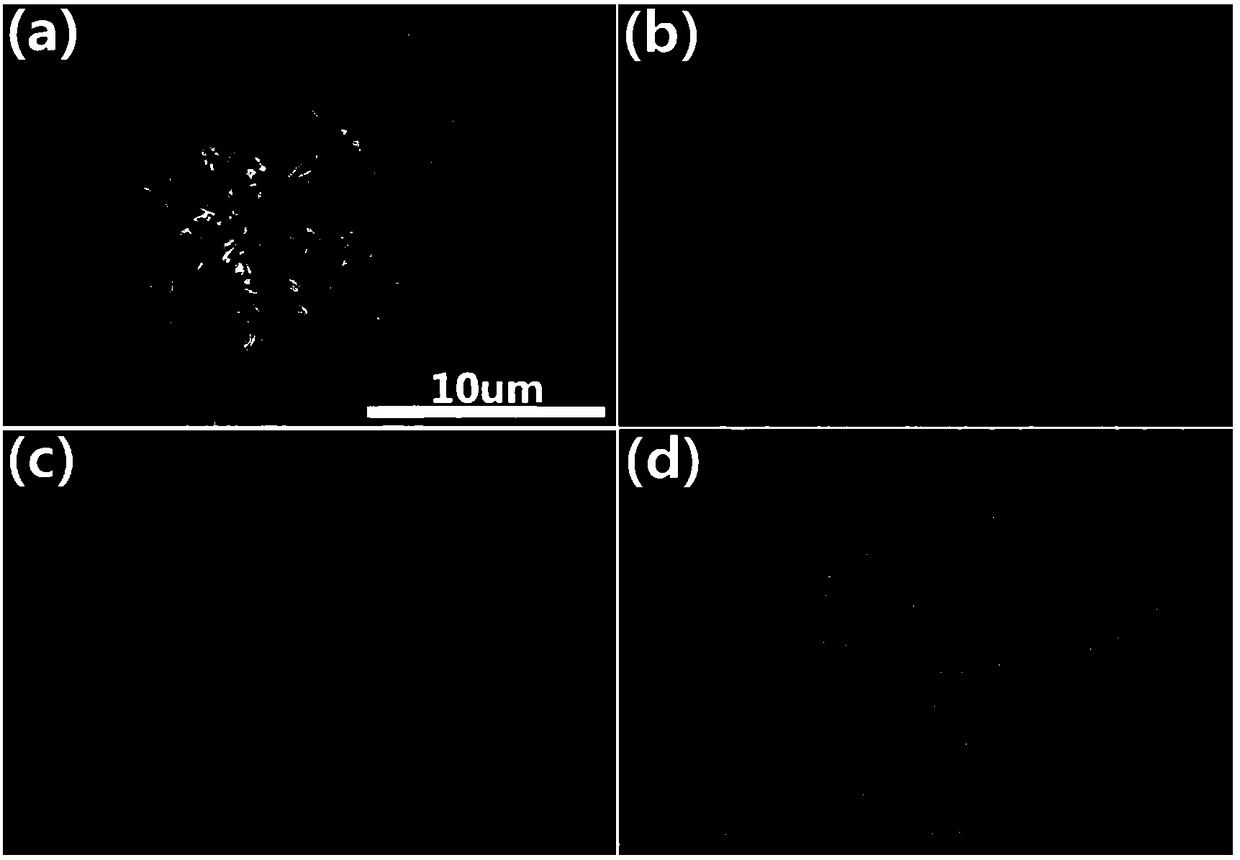Ternary Cu-Co-P (copper-cobalt-phosphor) nanorod as well as preparation method and application thereof
A cu-co-p, nanorod technology, applied in chemical instruments and methods, electrodes, electrolysis process, etc., to achieve the effect of simple preparation process and low cost
- Summary
- Abstract
- Description
- Claims
- Application Information
AI Technical Summary
Problems solved by technology
Method used
Image
Examples
preparation example Construction
[0026] A preparation method of ternary Cu-Co-P nanorods, comprising the steps of:
[0027] Step A, mixing copper nitrate, cobalt nitrate, urea, and ammonium fluoride together in water, making the concentration of copper nitrate in the mixed solution be 0.2 to 1.0 mmol / liter, and the concentration of cobalt nitrate to be 5.0 to 6.0 mmol / liter, The concentration of urea is 15.0-25.0 mmol / L, and the concentration of ammonium fluoride is 6.0-10.0 mmol / L, so as to prepare the precursor mixed solution.
[0028] Step B, placing the substrate in the precursor mixed solution, and transferring the substrate and the precursor mixed solution into an autoclave, and then reacting at 100-120° C. for 480-600 minutes, so that the CuCo-LDH nanorods were prepared on the above substrate.
[0029] Step C, drying the substrate and the CuCo-LDH nanorods on the substrate, and then according to the mass ratio of the precursor mixed solution: sodium hypophosphite = 1:20, the dried substrate together w...
Embodiment 1
[0039] A preparation method of ternary Cu-Co-P nanorods, comprising the steps of:
[0040] Step a, copper nitrate, cobalt nitrate, urea, ammonium fluoride are mixed together in water, make the concentration of copper nitrate in the solution after mixing be 0.6 mmol / liter, cobalt nitrate concentration be 6.0 mmol / liter, urea concentration be 20.0 mmol / L, the ammonium fluoride concentration is 8.0 mmol / L, thereby preparing the precursor mixed solution.
[0041] Step b, using carbon cloth (CC) with a size of 1×4cm as the substrate, placing the substrate in the precursor mixed solution, and transferring the substrate and the precursor mixed solution to a 50mL autoclave , and then reacted at 110°C for 480 minutes to prepare CuCo-LDH nanorods on the substrate.
[0042] Step c, drying the substrate and the CuCo-LDH nanorods on the substrate, and then according to the mass ratio of the precursor mixed solution: sodium hypophosphite = 1:20, the dried substrate together with the CuCo-L...
PUM
 Login to View More
Login to View More Abstract
Description
Claims
Application Information
 Login to View More
Login to View More - R&D
- Intellectual Property
- Life Sciences
- Materials
- Tech Scout
- Unparalleled Data Quality
- Higher Quality Content
- 60% Fewer Hallucinations
Browse by: Latest US Patents, China's latest patents, Technical Efficacy Thesaurus, Application Domain, Technology Topic, Popular Technical Reports.
© 2025 PatSnap. All rights reserved.Legal|Privacy policy|Modern Slavery Act Transparency Statement|Sitemap|About US| Contact US: help@patsnap.com



